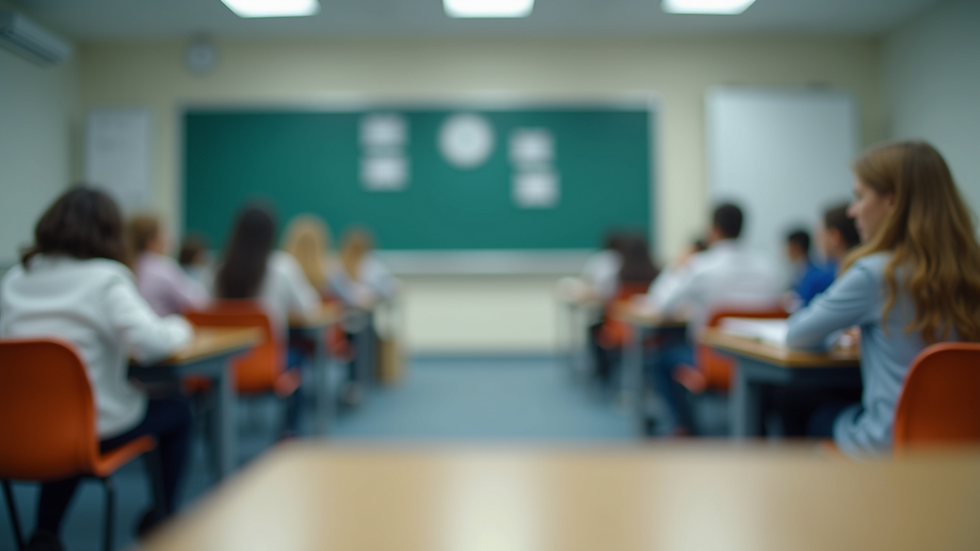Enhancing Learning Outcomes for Special Needs Students
- karencolton
- Oct 20
- 4 min read
Supporting students with special educational needs (SEN) requires thoughtful strategies and tailored approaches. These students often face unique challenges that can impact their learning experience. However, with the right support, resources, and understanding, their educational journey can be significantly improved. This article explores practical ways to enhance learning outcomes for special needs students, highlighting the special needs education benefits that come with inclusive and adaptive teaching methods.
Understanding the Special Needs Education Benefits
Special needs education benefits both students and educators by fostering an inclusive environment where every learner can thrive. When schools implement effective strategies, students with SEN gain confidence, improve academically, and develop essential life skills. Educators also benefit by learning new teaching techniques and gaining a deeper understanding of diverse learning styles.
Some key benefits include:
Personalised Learning: Tailoring lessons to meet individual needs helps students grasp concepts better.
Improved Social Skills: Inclusive classrooms encourage interaction and collaboration among all students.
Greater Independence: Specialised support promotes self-reliance and problem-solving abilities.
Enhanced Emotional Wellbeing: Understanding and addressing specific needs reduces anxiety and frustration.
For example, a school that integrates assistive technology, such as speech-to-text software, can help students with dyslexia complete writing tasks more effectively. Similarly, using visual aids and hands-on activities can support learners with autism spectrum disorder (ASD) in understanding complex ideas.

Effective Strategies to Enhance Learning Outcomes
To maximise the potential of special needs students, educators and caregivers can adopt several practical strategies:
1. Individual Education Plans (IEPs)
Creating detailed IEPs ensures that each student's unique needs are addressed. These plans outline specific goals, teaching methods, and assessment criteria. Regular reviews help track progress and adjust support as needed.
2. Multi-Sensory Teaching
Engaging multiple senses can improve retention and understanding. For instance, combining visual, auditory, and kinesthetic activities helps students process information in ways that suit their learning style.
3. Use of Assistive Technology
Tools like communication devices, audiobooks, and interactive software can bridge gaps in learning. These technologies empower students to participate more fully in lessons.
4. Collaborative Learning
Group work encourages peer support and social interaction. Pairing students with complementary skills fosters teamwork and mutual respect.
5. Positive Behaviour Support
Implementing clear expectations and consistent routines helps manage behaviour. Positive reinforcement motivates students and creates a safe learning environment.
6. Professional Development for Educators
Ongoing training equips teachers with the latest knowledge and skills to support SEN students effectively.
By combining these strategies, schools can create a nurturing environment that promotes academic success and personal growth.

What are the 4 Types of SEN?
Understanding the different types of special educational needs is crucial for providing appropriate support. The four main categories are:
1. Communication and Interaction
This includes difficulties with speech, language, and social communication. Conditions such as autism spectrum disorder (ASD) and speech impairments fall under this category. Students may struggle with understanding instructions or expressing themselves clearly.
2. Cognition and Learning
Students with learning difficulties like dyslexia, dyscalculia, or moderate learning disabilities are included here. They may require extra time, simplified instructions, or alternative teaching methods to grasp concepts.
3. Social, Emotional, and Mental Health
This category covers challenges related to behaviour, emotional regulation, and mental health conditions such as anxiety or depression. Support may involve counselling, behaviour management plans, or sensory breaks.
4. Sensory and Physical Needs
Students with visual or hearing impairments, physical disabilities, or medical conditions fall into this group. Adaptations might include specialised equipment, accessible classrooms, or tailored physical education.
Recognising these types helps educators design targeted interventions that address specific challenges effectively.

Practical Tips for Parents and Caregivers
Parents and caregivers play a vital role in supporting special needs students. Here are some actionable recommendations:
Communicate Regularly with Educators: Stay informed about your child's progress and challenges.
Create a Structured Home Environment: Consistent routines help reduce anxiety and improve focus.
Encourage Independence: Allow children to take on age-appropriate responsibilities.
Use Visual Schedules and Timers: These tools aid organisation and time management.
Promote Social Interaction: Arrange playdates or group activities to build social skills.
Seek Professional Support: Therapists, counsellors, and support groups can provide valuable assistance.
By working closely with schools and professionals, parents can reinforce learning and emotional wellbeing at home.
The Role of Inclusive Education in Maximising Potential
Inclusive education is a cornerstone of enhancing learning outcomes for special needs students. It involves integrating SEN students into mainstream classrooms with appropriate support. This approach benefits all students by promoting diversity, empathy, and collaboration.
Key elements of successful inclusion include:
Flexible Curriculum: Adapting content and assessment methods to accommodate different abilities.
Accessible Learning Environment: Ensuring physical spaces and materials are usable by everyone.
Supportive Staff: Having trained teaching assistants and specialists available.
Peer Awareness: Educating all students about diversity and acceptance.
Inclusive education not only improves academic results but also prepares students for life in a diverse society.
For more information on how to implement effective strategies, visit education special needs.
Enhancing learning outcomes for special needs students is a shared responsibility that requires commitment, creativity, and compassion. By understanding the unique challenges these students face and applying targeted strategies, educators and caregivers can unlock the full potential of every learner. The special needs education benefits extend beyond the classroom, fostering confidence, independence, and lifelong skills that empower students to succeed in all areas of life.




Comments